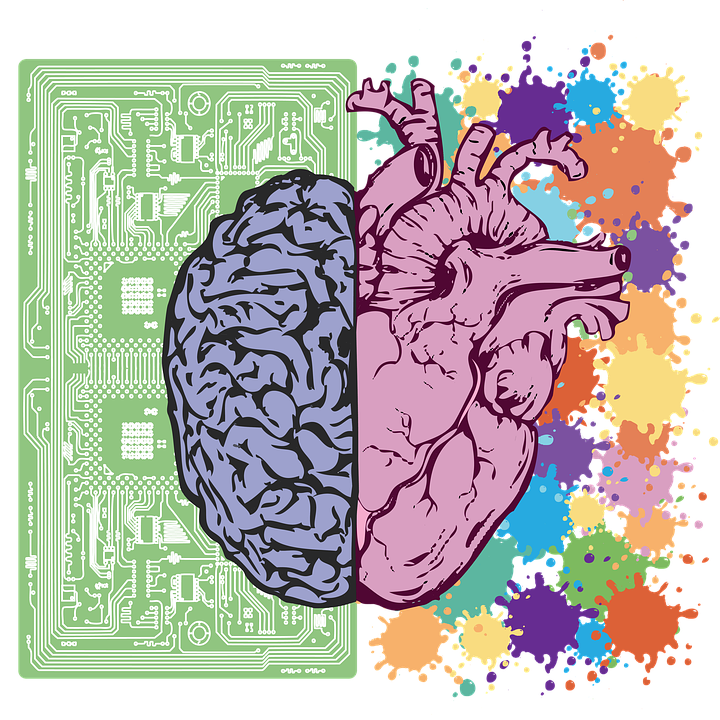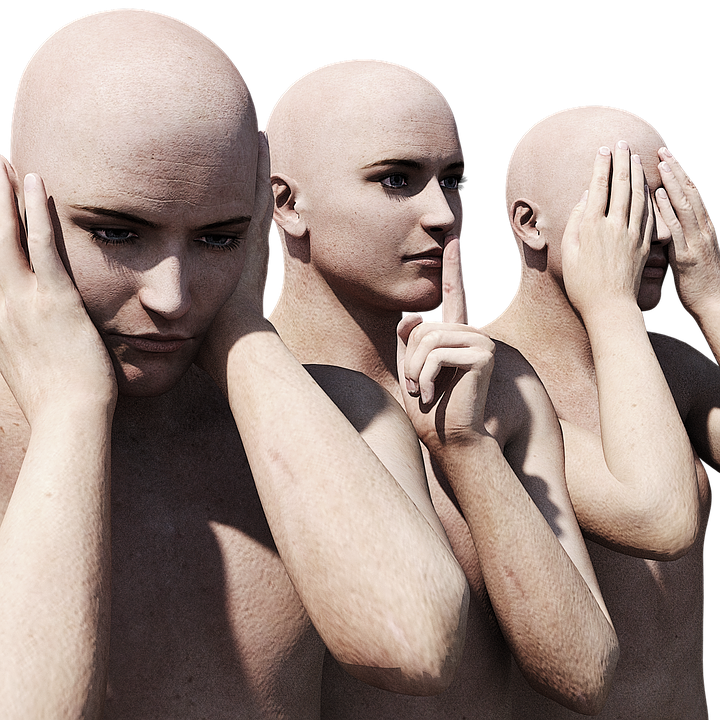What is cognitive?
Cognitive is a multidisciplinary term that combines scientific areas related to the study of brain functions – cognition, memorization, thinking and reflection, speech and analytical capabilities, conceptual psychological structures. Etymologically, the word “cognitive” comes from the Latin word cogniscere – to know, to know.
Cognitive sciences in their modern form provide an opportunity to study the most complex of the areas – human consciousness. It is a growing field of study that integrates psychology, anthropology, linguistics, philosophy, neuroscience, and artificial intelligence.
Cognitive functions are processes in the brain that allow you to receive, accumulate, analyze, store, create and restore information. The key role in these cognitive processes is played by:
- Executive functions are the totality of attention, planning, regulation and execution of intentional behavior.
- Attention – focusing on an action, a real or ideal object (idea, thought, image).
- Memory – the ability to receive, sort, encode, store and reproduce the information received at the right time.
- Speech is the communicative ability to express thoughts and speak.
- Imagination – the ability to plan, visualize, imagine intermediate and final achievements.
- Visuospatial functions – the ability to restore and compare previously received information with information received in real time (this is how we recognize familiar faces, similar objects).
History of the Cognitive Sciences.
People have always been interested in the problems of cognition, memorization, learning and understanding. If we talk about the science of cognitive science, then the works of ancient thinkers can be attributed to the first studies in this area. Even ancient Greek scientists wondered where human knowledge is stored. Some considered the heart to accumulate knowledge, others – the brain.
In his works, Plato developed the idea that every organ of human senses is responsible for detecting one type of natural energy – light, sound, or any other. Aristotle assumed that the brain, the main accumulator of knowledge, works according to the principle of associations – it unites objects according to the principle of similarity or contrast. Later, during the Middle Ages and the Renaissance, in addition to the known five senses, divine sources of knowledge were attributed to the brain.
A surge of interest in the cognitive processes of the human brain arose in the 20-50s of the XX century. The foundations of a new cognitive science were laid in the research of the English logician and cryptographer Alan Turing. Turing was able to prove that complex calculations are performed by repeating the simplest mathematical operations. Thus, he confirmed the theory that thinking is computation. The idea came up that you can create a smart machine that can think like a person.
At the same time, the first circle of problems in the cognitive sphere was formed – information processing, the structure of language and its influence on thinking, the development of artificial intelligence and cybernetics. On September 11, 1956, at a symposium at the University of Massachusetts, linguist Noem Chomsky made a presentation on the impact of verbal behavior on consciousness and learning ability. This date is considered the official birthday of cognitive sciences.
The cognitive hexagon is the six core disciplines of cognitive science that are equally important for research:
- Philosophy is the ability to correctly formulate and ask a question in order to get an adequate answer to it.
- Linguistics – studies speech communication and human speech capabilities.
- Anthropology – helps to find out who we are and how we differ from other biological species.
- Artificial intelligence is the ability to simulate human skills.
- Neurosciences – show what happens in the human brain at the time of listening, learning, acting, making a decision.
- Psychology – studies the sphere of unconscious and conscious knowledge, which determines the logic of cognition.
Cognitive science today also includes genetics, which studies the genomes of our prehistoric ancestors.
What is the cognitive sphere of personality?
Scientists give different definitions about the nature of intelligence, but they agree on one thing – there is no single answer to this question. Because besides intellect, there are also concepts of mind, wisdom, genius. It is impossible to determine intelligence using testing, because it equally depends on the most important processes in the cognitive sphere: memory, logical thinking, imagination and attention. For example, there are people with brilliant mathematical abilities who are absolutely incapable of communication.
There is only one conclusion – the cognitive sphere is formed in everyone, but everyone develops it differently. If cognitive abilities are properly trained, a person:
- Faster is oriented in what is happening and assimilates information.
- Effectively filters incoming information: remembers what is needed and discards what is unnecessary.
- It analyzes and remembers the original data better, retrieves it from memory faster.
- Knows how to concentrate on the main thing.
- Knows how to think logically and creatively at the same time.
- Quickly makes the right conclusions, makes important decisions.
This is why cognitive ability is considered the very foundation that determines happiness and self-realization.
Do you want to make the best decisions, find the perfect career, maximize your potential and receive personal development guidance?
How to develop cognitive brain function?
Today, a lot is known about intelligence as a human cognitive ability, but there is no single theory. One thing is clear – it is impossible to measure intelligence, but you can test and improve each of the cognitive areas separately. Moreover, improving one ability has a positive effect on others.
How to develop memory?
It turns out that memory can be pumped up with special exercises, like muscles in the gym. Here are 3 fun ways to improve memory without overhead:
- Laugh more. A little humor in the body will reduce the level of stress hormones, lower blood pressure, and lead to a good mood. As a result, this combination will refresh your memorization ability.
- Get enough sleep. During sleep, new connections are formed between neurons, and information is transferred from short-term memory to long-term memory. As a result, a good sleep will help you prepare for the exam better than night cramming.
- Write by hand. The traditional way of taking notes develops fine motor skills. In addition, before taking notes on paper, we mentally structure the material, train our memory. As a result, a handwritten synopsis leaves more material in memory than a thoughtlessly recorded lecture on a tablet.
So, you slept, laughed, and tuned in for effective memorization. But simple reading of the material does nothing. It is necessary to do this “wisely”, using scientific methods of working with large amounts of information:
Concentrate. Attention and memory are interconnected. To memorize, a favorable environment is needed, otherwise the information received simply will not reach the required memory departments. So turn off loud music, TV, phone and focus on the tutorial. Otherwise, no effective memorization strategy will help.
Repeat meaningfully. Repetition is a classic way to learn material. But pointless cramming is of little use. Therefore, use extra efforts to consolidate: add rhythm, speak out loud, retell the material to the other person in your own words.
Structure. Dividing into categories, grouping, identifying patterns, dividing information into groups from subgroups is the creation of a solid framework on which knowledge will be held. The main purpose of structuring is to simplify information about the main elements and come up with patterns. Therefore, use mnemonics or Tony Buzan’s mental memory cards.
How to train attention?
Focus exercises are good, but not enough. Because attention is not an isolated muscle that works on its own, it interacts with other “muscles.” It is difficult to concentrate if you are tired, anxious, or upset. Therefore, for effective concentration, special conditions are required:
Let the previous thoughts or experiences digest. It is not for nothing that the expression “do it with a fresh mind” exists. That is, to start a new business in the morning, in a vigorous state or after rest. Therefore, before starting a new task, you need to spend 15-20 minutes alone and let the previous thoughts digest. Or alternate the work of the brain with exercise.
Focus on one task. Unfortunately, multitasking often negatively affects concentration. The simultaneous execution of several processes reduces the efficiency of each – when the brain constantly switches its focus, it quickly gets tired. Therefore, start training concentration on everyday activities – focus on the taste of the dish during meals or on the work of one muscle during training.
Get rid of irritants. This is how our brain works – it is constantly distracted by sounds, pictures, movement. It is impossible to get rid of everyone, but the majority will definitely work out. Therefore, before work, turn off the sound on your phone, skype, mail notifications. At work, try to organize a comfortable workspace, ask your colleagues not to bother with questions for a while.
How to develop creativity and imagination?
Creativity cannot be turned on with a button, but it can and should be developed. There are 3 surprising ways to develop and enhance your creativity:
Don’t wait for your own inspiration. Creativity is available to everyone and everyone, and you don’t need to be a genius to start creating. There is nothing completely original in the world, so at the beginning of your creative path, feel free to copy other people’s masterpieces, collect ideas. The spark of inspiration will come with experience, so follow your interests and boldly reveal your creative Self.
Start a mobile inspiration diary. Many thoughts come to us throughout the day. Some leave you indifferent, but some catch. Unfortunately, when we try to remember something, especially valuable ideas are lost forever. Therefore, get a small A5 notebook and write down interesting thoughts in it throughout the day.
Look for new experiences. New impressions give new emotions. Emotions reveal inner resources. You don’t have to go to an exotic country or jump with a parachute to get new experiences. You can dwell on less radical methods. Therefore, please yourself with new recipes, start drawing or playing a musical instrument, decorate your apartment or take part in a festive event.
Cognition in psychology
The concept under consideration is a thought or a figurative representation that are unnoticed by a person if he does not concentrate on them. Classical cognitions inherent in depressive states and other clinical disorders are often referred to as “automatic thoughts”. People tend to think that their thoughts and ideas are a reflection of reality, so they rarely evaluate their truth.
At the same time, knowledge, in contrast to the analyzed concept, is at the same time a justified judgment or an adequate and reasoned representation, or the process of obtaining this idea.
Cognition is outside the truth value. This phenomenon operates with both delusions and true knowledge. It is characterized by the processes of interaction with judgments (which are sometimes inadequate and erroneous) and knowledge. Cognition as a process generates and applies representations ascribed to opinions and knowledge.
Also, the phenomenon under consideration differs from emotions, since it operates with discrete, specialized, systematized structures.
Cognition is structured, and its elements are focused on displaying the structure of the external environment, which is due to the need for social activity. Despite the fact that the cognitive components are connected with verbal structures, and the languages of all kinds of communities are very diverse, the main tools of cognition are comprehensive, which is found in the semantics of languages.
Common linguistic elements, universal grammatical structures, as well as the unification of categories around prototypes demonstrate that people not only “comprehend” reality, but actively and purposefully recreate it in an image for specific purposes.
Cognition in psychology is a generic term used to refer to processes aimed at acquiring knowledge. The analyzed concept captures all mental activity or states aimed at assimilating knowledge and functioning of the mind, which includes perception, imagination, speech processes, attention, memory, problem solving.
Thus, cognition is a collective designation of directed efforts undertaken in order to find, cognize, define, understand, disassemble, systematize, discuss objects, and also change them through mental operations.
Psychologists who rallied around the theory under consideration are convinced that a person is not a machine that thoughtlessly and automatically reacts to prompts (internal stimuli or external events). On the contrary, the human mind is capable of much more. He can analyze information about real reality, compare, make decisions, solving problems that overcome him almost every minute.
Thus, cognitivism is based on understanding the individual as a being, thinking and analyzing, since he is in the environment of information that must be realized, evaluated and used.
Cognitive processes – cognitions, are studied by cognitive psychology, which is focused on mathematical imitation of mental activity and experiment. Simply put, it is an offshoot of psychology that studies cognitive processes, namely: representations, memory, attention, mental acts, imagination, decision-making skills. Some of the postulates of this type of psychology are the basis of modern psycholinguistics. The conclusions of this branch of psychology are widely used in other sections of the doctrine of the soul (psychology of education, personality, social psychology).
In other words, cognitive psychology differs from the behavioral concept of “stimulus-response” by the absence of a one-line direction of behavior determinism. She is guided by the doctrine of self-organization and self-regulation of the studied systems. From this it is possible to deduce other methodological doctrines of cognitivism, aimed at complex-structural systemic connections that arise in the course of the act of cognition.
The main interest of this type of psychology is concentrated on thoughts. Behavioral patterns, emotional response, environment – all this is essential, but the characteristic feature of cognitive psychology is precisely the focus on the client’s judgments, expectations, attitudes, beliefs, ideas, perceptions, way of thinking – that is, cognitions.
Often people frustrate themselves with their own irrational, maladaptive thinking and create problems that in reality might not have happened. Or even in the presence of objective, unsuccessful circumstances, people are not able to get rid of unnecessary thoughts of an obsessive nature, which only complicate the process of finding a way out of a difficult situation. Therefore, an inadequate, maladaptive, lack of rationality and balance, the cognitive process of mental activity is a powerful “generator” of stress, which also prevents the successful fight against stressors and further overcoming the negative consequences of such conditions.
In addition, the presence in an individual of several conflicting cognitions (knowledge, ideas, judgments) can often give rise to cognitive dissonance.
The following are typical causes of cognitive dissonance:
– logical inadequacy between a specific process or phenomenon with judgments about it or knowledge;
– the discrepancy between the individual understanding of the individual and the position of the majority of the subjects surrounding him;
– the contradiction that arises between the previously obtained experience and the repetitive situation;
– following a traditionally established pattern of behavior or cultural customs contrary to one’s own idea of them.
Simply put, for a common man in the street, cognitive dissonance is an internal contradiction that first appears or lasts for a certain period, which generates negative emotions. In order to eliminate unpleasant sensations, the individual seeks to smooth out internal confrontation through the following strategies:
– change in behavioral response: the individual acts in accordance with the existing cognition;
– denial of responsibility: the subject for his own offense shifts responsibility to external factors or other people;
– cognition change: the individual transforms his own attitudes (attitudes, which are a formed assessment of a certain object);
– overestimation of cognition: the individual reduces attention and diminishes the importance of dissonant structures;
– the formation of a new cognition: the subject includes a new component in the process, which is the justification of his behavior;
– search for like-minded people: the individual seeks to find other people who do the same in similar situations.
In some situations, people try to prevent the onset of dissonance that provokes internal discomfort by avoiding any information regarding an existing problem that may conflict with an already existing judgment.
Cognitive functions, abilities and processes
Cognitive functions are processes in the brain that we use when we study our environment.
The information that comes through our analyzers is processed. We interpret it and translate it into knowledge. They are stored in memory, accumulate over time, becoming life experience.
Cognitive abilities are :
- perception
- Attention
- memory;
- thinking;
- imagination.
If a person develops these cognitive characteristics throughout his life, then he can be considered smart and intelligent.
Since he is able to perceive information from different sources in a large volume and for a long time; remembers it, reproduces; draws conclusions; has logical thinking; can present the most vivid images based on what he saw or heard.
How to develop cognitive thinking
Immediately after birth, the child begins to perceive and study the world. But he does it at his own level, depending on age and whether his parents are engaged with him.
There are such types of cognitive thinking:
- Visual-effective (up to 3 years old) – the child examines everything around, tries to touch, sometimes even tries to lick. That is, it uses all the simplest ways to learn about objects around. The role of mom and dad at this stage is to show the child various interesting objects, name them, tell them in an accessible language about their properties and method of application, and let them study for themselves.
- Visual-figurative (up to 7 years old) – the child learns to complete assigned tasks, solve tasks using logic. Parents should play with him in developing games for fine motor skills, memory, attention and imagination. Also teach the rules of behavior, which also develops cognitive thinking.
- Distracted (after 7) – the student learns to understand, imagine abstract things (what is it?) That cannot be seen or touched.
But what is an adult to do? Is the level of development of memory or thinking that is at the moment is the limit? No, even at 40 or 60 you can continue to practice your cognitive abilities.
Love for knowledge of the world around and oneself contributes to the improvement of these functions of the brain.
Some recommendations that are directly aimed at developing thinking :
- Learn a foreign language.
- Take a different route to get to work or school.
- Do the usual things with your other hand (for right-handers – with your left, for left-handers – with your right).
- Do crosswords.
- Draw even if you don’t know how. Complicate: take pencils in both hands and continue to draw something.
- Say different words in your voice or to yourself in reverse.
- If you need to calculate simple equations, do it in your head, without the help of a calculator and paper.
- In order to train your memory, you need to remember in detail how you went all day before going to bed. You can also reproduce an autobiography from childhood itself. Or in reverse order: from today to the moment when they crawled on the floor for a toy. You can remember just in your head, or by telling someone, or by writing in a notebook.
- Watch various films and read books, of course.
- There are many applications in our smartphones that are directly aimed at the development of certain cognitive functions.
Cognitive impairments and disorders
The more a person is engaged in intellectual development, the more connections arise between neurons, which, in turn, also develop. This creates a cognitive reserve.
If one part of the brain ceases to function adequately due to injury or aging, then another will take responsibility (what is it?) For performing important functions.
An experiment was conducted at Harvard where 824 people were observed over the years. They were of different levels of upbringing, social security and intellectual development.
The result showed that people who actively developed their cognitive abilities were able to think logically in old age, remembered the smallest details, and behaved adequately.
Cognitive impairments are possible for the following reason:
- injury;
- infectious diseases of the brain itself (meningitis)
- infectious diseases of other systems, in which toxins are released and cells of the nervous system are damaged (syphilis);
- oncological education;
- diabetes;
- stroke;
- mental illness (schizophrenia)
- aging.
Depending on what caused the dysfunction, there will be different symptoms and cognitive deficits. Let’s take a look at the example of senile and vascular dementia.
Dementia that occurs after age 65 is called Alzheimer’s disease. The main symptom is the development of forgetfulness. In the future, memory impairment progresses to the point that a person may not remember his name and where he lives. Also, problems with orientation in space begin. Therefore, such patients need constant supervision.
Speech is impaired. It is difficult for a person to pronounce words, repeats them. Then there are problems with logical thinking, which is also noticeable when talking with a patient. They become angry at everything around, very sensitive and whiny.
Vascular dementia develops due to insufficient blood circulation in the brain, ischemia, and strokes. Memory impairment does not come to the fore as in Alzheimer’s. A decrease in attention and concentration is immediately noticeable. It is difficult for patients to highlight the similarities and differences between objects, slow thinking, it is difficult to pronounce words.
Treatment is prescribed only after a thorough diagnosis of the cause. If this is a consequence of diseases such as infectious, oncological, diabetes mellitus, then therapy is aimed at getting rid of or correcting the underlying disease.
For Alzheimer’s disease, acetylcholinesterase inhibitors are chosen. In case of vascular disorders, the attention of doctors is aimed at improving blood circulation: phosphodiesterase inhibitors, calcium channel blockers, a2-adrenergic receptor blockers.
In order to improve the state of intelligence in diseases, drugs with metabolic and antioxidant properties are often used. Experiments have also proven the positive effect of nootropics. But it is worth remembering that they only help when there is a problem. Does not improve cognitive performance in healthy people.
Cognitive distortion (dissonance)
Cognitive dissonance is not just a tricky phrase that only applies to scientists and professors. We ourselves often encounter this in everyday life .
This is a state in which contradictions arise:
- knowledge;
- opinions;
- beliefs.
During cognitive distortion, a person experiences confusion, anxiety, awkwardness, stress, shame and guilt, or even anger – psychological discomfort. For example, there is a beggar sitting in a pedestrian crossing, to whom you gave some money. She reaches for them, and an expensive watch is shown on her hand.
You are confused at first because you thought the person needed financial support. And it turns out that he may be richer than you yourself. At first, you find yourself in a stupor, which can then turn into aggression, because you have been fooled.
Dissonance (what is it?) Occurs for the following reasons :
- the discrepancy between a person’s knowledge of an object, phenomenon, other people and really what they are;
- mismatch between acquired experience and situations that repeated itself, only in a different way;
- discrepancy between personal opinion and the point of view of others, which pops up randomly;
- maintaining traditions and beliefs, if you yourself do not sincerely honor and believe them;
- logical inconsistency of facts.
What if you have this incomprehensible cognitive dissonance? First, you need to reduce the significance of this condition. After all, there is an explanation for everything, which is simply not available to you at the moment.
To do this, you need to look for new information about the subject of cognitive distortion. Study in more detail, or talk about it with other people. Perhaps you just had a small piece of knowledge, and had a great opportunity to expand it.
It is not worth having very shackled convictions. You have to absorb and notice information of different formats, study everything around. With this approach to life, it is unlikely that something can surprise or greatly hurt. You just stumble upon new knowledge, which you will immediately take note of.
Black and white thinking
A person with dichotomous thinking perceives the world from the “either / or” position, there is no third way. Good or bad, right or wrong, all or nothing. He does not admit that between black and white, you can almost always find at least a few shades of gray. Anyone who sees people and events from only two sides refuses to accept intermediate (and most often the most objective) assessments.
Personalization
People with this type of thinking tend to overestimate their importance and take many things personally. Someone else’s behavior is usually viewed as a consequence of one’s own actions or deeds. As a result, those who are prone to personalization assume responsibility for external circumstances, when in fact nothing depended on them.
A hypertrophied sense of duty
Attitudes in the spirit of “must”, “must”, “should” are almost always associated with cognitive distortions. For example: “I had to come to the meeting early”, “I have to lose weight to become more attractive.” Such thoughts evoke feelings of shame or guilt. We treat others no less categorically and say something like: “he should have called yesterday,” “she is forever indebted to me for this help.”
People with similar beliefs are often upset, offended and angry at those who did not live up to their hopes. But with all our desire, we are not able to influence other people’s behavior, and it is definitely not worth thinking that someone “should”.
Catastrophic
It is a habit to perceive any minor nuisance as an inevitable disaster. For example, a person has not passed one exam and immediately imagines that he will not finish the course at all. Or the exam is still ahead, and he “knows” in advance that he will certainly fail, because he always expects the worst – so to speak, “early” catastrophization.
Exaggeration
With this cognitive distortion, everything that happens is inflated to colossal proportions. The case resembles catastrophization, but not so hard. It is best described by the saying “make an elephant out of a fly.”
Understatement
Those who tend to exaggerate easily underestimate the importance of pleasant events. Two opposite distortions often end up in the same bundle. People think something like this: “Yes, I was promoted, but just a little – it means that I am not appreciated at work.”
Telepathy
People with this thinking pattern attribute to themselves psychic abilities and believe that they can read others like an open book. They are sure they know what the other person is thinking, although the guesses are rarely true.
Clairvoyance
The so-called “clairvoyants” try to predict the future, usually in a black light. For example, they say without any reason that everything will end badly. Before a concert or a movie show, they usually say: “You don’t have to go anywhere, I have a presentiment that tickets will run out in front of our noses.”
Generalization
A tendency to generalize means a habit of drawing conclusions from one or two cases and denying that life is too difficult for hasty conclusions. If a friend does not come to a meeting, this does not mean that he is generally unable to fulfill his promise. In the vocabulary of a person prone to making such a cognitive error, the words “always”, “never”, “constantly”, “every time” are often found.
Depreciation
This is an extreme form of all-or-nothing thinking, which manifests itself in the tendency to devalue any achievements, events, experiences (including one’s own) and to see a continuous negative in everything. A person with such stereotypes usually neglects compliments and praise.
Priming
The context forms the direction of thought. If the conversation is about food, recipes, taste, etc., then the word “m … o” most people will continue as meat than as soap. Experiments show that when people are shown images or words associated with old age, people begin to walk more slowly. Money-minded people begin to behave independently and selfishly, and are less inclined to help others. This is due to the fact that the image gives rise to associations that shape our behavior. The priming effect is used in branding. Say without hesitation the name of a fast food restaurant, or the most fashionable mobile phone.
Illusion of truth
The more recognizable the image, the more the statement is associated with security and truth. Thus, the frequent repetition of lies makes the deception believable. Truth is like feeling familiar. Recognizable = lightness. The more contrasting the color, the simpler the perception, the more believable the statement. Simple words convince better than difficult ones. Poems are perceived as information containing deep meaning. The type and rhythm of prose influence the sense of believability.
Cognitive tension mobilizes System 2. If you want people to start analyzing information, use poorly readable text, blurry pictures, etc.
The context sets the credibility. Answer the question “how many animals of each species did Moses take with him to the ark?” Most will answer 2 without noticing that Noah built the ark and Moses is present in another biblical story. If you put Steve Jobs in Moses’ place, people will immediately notice the inconsistency.
Snapping effect
The starting point affects our estimate. If you ask 2 questions to groups of people “The height of the sequoia is more or less than 365 meters, and what is the height, in your opinion?” and “The height of the sequoia is more or less 55 meters, and what is the height in your opinion?” people will give different ratings. The numbers 365 and 55 are taken randomly. Those who were given a peg 365, on average, would give an answer of 257 meters, and those who were given a peg 55 would answer 86 meters.
An example of a binding is the restriction of the offer “no more than X units of goods per one hand”.
Retrospective distortion
People change their point of view with a transference to the perception of the past. If an event occurs, the person overestimates the likelihood of his own forecast in the past and vice versa. The illusion of understanding the past gives rise to the illusion of a predictable future. People wonder how it was possible to make such an obvious mistake, forgetting that at the time of the decision, the mistake was not obvious.
Ignoring statistics and random events
People tend to find causal relationships even where there is no relationship. The sequence of events is endowed with a causal relationship. The illusion of skill caused by the success of stock market brokers is perceived as professionalism. On a coin toss, the sequences O, O, O, O, P and O, P, O, P, P are equally likely, but people think the second sequence is more likely. “His daughters were born 3 times, now a boy will be born” or “He has an easy hand, Sergey has already scored 2 goals today, I’ll give him a pass to score the third one”.
Regression to mean
The result is made up of 2 factors: professionalism and luck. If an athlete performed very well, then with a great deal of confidence, we can say that he is a professional and the day was very successful, and vice versa. But the level of luck tends to average as the number of attempts increases. In subsequent attempts, the likelihood that the athlete will perform worse than on a good day is greater, and vice versa. This explains the illusion of punishment being effective. People think that punishment influences the improvement of the future result, although this is just a regression to the mean.
Why Reducing Cognitive Errors In Your Life Is Critical
Cognitive errors are not accidental. These are systematic errors and they appear regularly. It is in your power to consciously foresee such an outcome and even “on the shore” provide for a different approach to the solution.
You live in a world where there are many things that cannot be controlled. Isn’t it great to get some extra control? Take responsibility and streamline processes. Considering that you can get at least + 20% to your thinking abilities.
A practical example of circumventing cognitive biases from life
You are a copywriter and write articles for customers on the exchange. Your work experience is 1-1.5 years. You get a very non-trivial order, which is a little out of the ordinary experience and you need additional time to study, or a more creative approach. You have figured in your head and set a deadline date, estimated the deadlines. This is where the fun begins!
Planning bias is a cognitive bias associated with being overly optimistic and underestimating the time it takes to complete a task. This error occurs regardless of whether the individual knows that similar tasks in the past took longer than planned.
This can also be described by Murphy’s law, the law of meanness, if something can go wrong, it must be foreseen. As a result, you get an estimate that is positive in both outcomes:
- If it took less time: great, you are happy and the customer is happy;
- If it took longer: you are still closer to reality than the original estimate.
The banal is not as banal as it seems. Nothing new is written here for many, you can intuitively act with a similar approach. But will intuition work on all 20 of the most common cognitive biases? What is better – to spend 15 minutes of your life studying the base and being able to bypass such taunts of consciousness, or to bet on a case?
How did the term cognitive biases come about?
The term cognitive bias was coined by scientists Daniel Kahneman and Amos Tversky after conducting their experiments in 1972. They were able to identify several ways of thinking when people made decisions other than rational choice theory. That is, they discovered the influence of stereotypes imposed on people on their conclusions.
Later, the results of the two scientists became the basis for further research and played an important role in the development of various sciences, including medicine, psychology and even political science.
The 20 most common cognitive biases Thinking bugs
Below are 20 formulaic judgments that are more common than we would like. They were taken from the article “Cognitive Bias” on Wikipedia, where information on cognitive biases is constantly updated and remains relevant.
- The effect of unnecessary information. The desire to search for data that will not affect the planned activities in any way. It’s worth emphasizing here that sometimes less is more. The accumulation of unnecessary information can hinder the effectiveness of our efforts.
- Availability heuristic. We tend to overestimate the weight of certain information. For example, you can hear from others that smoking is not so harmful, because their friend lived for a hundred years and smoked three packs of cigarettes daily.
- Snowball effect. The chance that a person will accept a point of view increases with the number of people who share it. The effect can be seen, for example, during elections, when those who did not decide are guided by polls.
- White spot error. Failure to recognize one’s own cognitive errors is also a cognitive bias. In this case, people may even point out someone’s cognitive error, but they don’t notice their own. Few people know that in the eyes the so-called “blind spot” is the field of vision, in which we see nothing.
- Solution support effect. It seems to you that if you made a choice, it should be positive, although it can have many negative sides. So, you can consider your dog a wonderful animal, although it is aggressive and often bites others.
- The illusion of grouping. Something that underlies the gambler’s paradox. A person begins to look for a pattern in random events. For example, when he expects red to be more or less likely to appear after a series of opposite colors on a tape measure.
- Confirmation effect. We tend to listen only to information that is consistent with our beliefs or confirms our initial assumptions, regardless of whether they are correct. This is how “groups of mutual adoration” are formed. Consider, for example, why discussions on topics such as global warming or politics tend to end in insults.
- The mistake of conservatism. This happens when people value older information more than what is discovered later. For example, it took a long time to accept the fact that the earth was round, because the belief that it was flat had persisted before.
- Focus effect. It consists in focusing attention on one detail, exaggerating its significance. For example, when reward negotiations are underway, whoever first proposes creates a range of rational possibilities in the heads of both. In this case, it will be difficult to go beyond the same amount. Another example is the study of the level of happiness in individual states of the United States. There were no significant differences, although people believed that California residents should be the happiest, because this is due to good weather and a carefree life. But they did not take into account, for example, frequent earthquakes or crime.
- The ostrich effect. Denial of negative information by “hiding your head in the sand”. Research has shown that during times of crisis, savers do not often check the value of their investments.
- The effect of the result. Evaluating a decision by its results, not by tracking how the decision was made and what influenced it at the moment. Just because you managed to win at the casino does not mean that the decision to spend your savings was wise.
- Overconfidence. It is also a cognitive error associated with overestimating one’s abilities. This makes people more inclined to take more risks in everyday life. This is also seen in the examples of many experts who believe in their infallibility on the topic of their profession.
- Placebo effect. The most famous is the simple belief that an action can cause some kind of effect, causes it. Sometimes used in medicine.
- The illusion of pro-innovation. The inventor of the invention overestimates its usefulness, while at the same time turning a blind eye to its disadvantages and limitations. Think about all the latest startups.
- Novelty. The tendency to overestimate the latest information at the expense of the collected data. This is especially dangerous when investing money, when it seems to us that the market will always look the way it does now. That is, without taking into account the ups and downs tendencies.
- Difference effect. We focus on the most outstanding aspect of a person or a particular cause. For example, when we think about death, we may be intimidated by the vision of a lion or being killed by a bomb. And we forget about more obvious reasons – diseases or car accidents.
- Selective perception. We allow our expectations to influence our perception of the world. It has been established that people who were offered to simply drink an alcoholic beverage (where there was no alcohol) felt and behaved as if they were “slightly inserted”. Closely related to the placebo effect.
- Stereotypes. The belief that a group or person has certain characteristics, despite not having any knowledge of them. This is sometimes useful as it allows you to identify strangers as friends or enemies. However, this often only hurts.
- Survival error. It consists in when a person focuses exclusively on examples of survival, misjudging the situation. So, it may seem to everyone that running your own business is easy – after all, we hear little about those who have turned out to be bankrupt.
- Zero risk illusion. We like it when something is definite and cannot surprise us, even if it is unproductive. Eliminating risk to zero means nothing bad will happen, but you can also get a lot less.
Sources used and useful links on the topic: https://WikiGrowth.ru/chto-takoe/kognitivni/ https://psihomed.com/kognicziya/ https://KtoNaNovenkogo.ru/voprosy-i-otvety/kognitivnyj-ehto- kakoj-kognitivnye-funkcii-sposobnosti-narushenij-iskazhenij.html https://www.psychologies.ru/articles/20-kognitivnyih-iskajeniy-i-kak-oni-vliyayut-na-nashu-jizn/ https: // habr .com / ru / post / 410961 / https://1timer.ru/mozg-i-logika/kognitivnye-iskazheniya/









